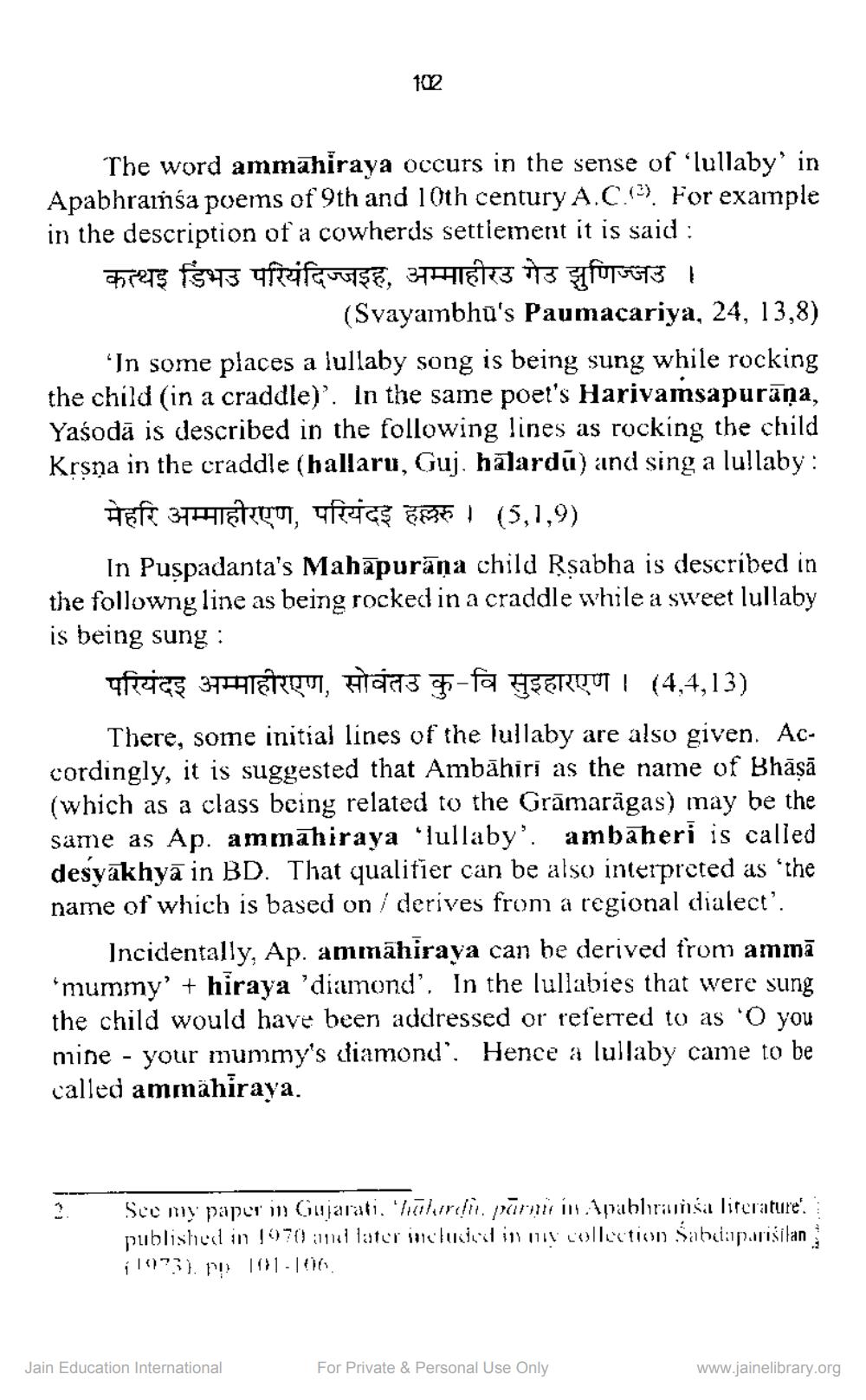________________
The word ammahiraya occurs in the sense of 'lullaby' in Apabhramsa poems of 9th and 10th century A.C.. For example in the description of a cowherds settlement it is said:
102
कत्थइ डिभर परियंदिज्जइह, अम्माहीरउ गेउ झुणिज्जउ । (Svayambhu's Paumacariya, 24, 13,8)
'In some places a lullaby song is being sung while rocking the child (in a craddle)'. In the same poet's Harivamsapurāṇa, Yasoda is described in the following lines as rocking the child Krsna in the craddle (hallaru, Guj, hālardū) and sing a lullaby:
मेहरि अम्माहीरएण, परियंदइ हल्लरु । (5,1,9)
In Puspadanta's Mahapurāṇa child Rṣabha is described in the following line as being rocked in a craddle while a sweet lullaby is being sung:
परियंदर अम्माहीरएण, सोवंतउ कु-वि सुइहारएण । ( 4, 4, 13)
There, some initial lines of the lullaby are also given. Accordingly, it is suggested that Ambahiri as the name of Bhāṣā (which as a class being related to the Gramarägas) may be the same as Ap. ammahiraya 'lullaby'. ambaheri is called desyakhya in BD. That qualifier can be also interpreted as 'the name of which is based on / derives from a regional dialect'.
?
Incidentally, Ap. ammāhiraya can be derived from ammā 'mummy' + hiraya 'diamond'. In the lullabies that were sung the child would have been addressed or referred to as 'O you mine your mummy's diamond'. Hence a lullaby came to be called ammahiraya.
See my paper in Gujarati, hūlardi, pārnic in Apabhramsa literature. published in 1970 and later included in my collection Sabdaparisilan (1973) pp 101-106.
Jain Education International
For Private & Personal Use Only
www.jainelibrary.org




